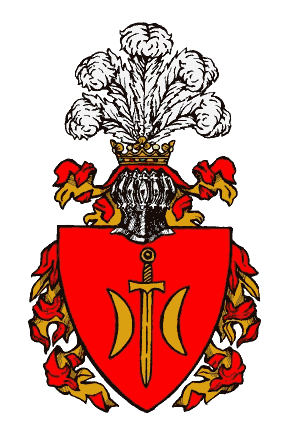Abyśmy nie byli jak te liście po ziemi wiatrem historii przewracane,
abyśmy wiedzieli z jakiego drzewa pochodzimy.
Nazwisko Piaszczyński jest wśród współherbowych herbu Ostoja.
Legenda herbowa:
W 1069 r. Bolesław Śmiały nadał herb Ostoja pewnemu rycerzowi.
Rycerz ten schwytał przednią straż pogan, a jeden z jeńców obiecał mu,
przysięgając na słońce, że w zamian za wolność i herb pomoże w zniszczeniu reszty wrogów.
Wrócił do swoich, uspokoił ich, że w okolicy nie ma Polaków i kolejno wprowadzał oddziały pogan
w zasadzkę zastawioną przez Ostoję. Kiedy nadeszły posiłki Ostoja w pierwospy uderzył
na nieubezpieczonych wrogów i przez tydzień od kwarty do kwarty wycinali Polacy pogan.
W nagrodę Ostoja otrzymał herb z dwoma miesiącami ( półksiężycami) i miecz otłuczony.
Marek Derwich, Marek Cetwiński, Herby, legendy, dawne mity, s. 73
Ostoja. Que duas lunas defectuosas ceruleas dorsis contra se rendentes,
cruce etiam cerulea illas intersecante, in campo rubeo defert.
Jan Długosz, Insignia ..., nr87, s. 61-62
Ostoja.
Która dwa księżyce niepełne woskowe[złote] grzbietami naprzeciwko siebie ułożone,
krzyżem zaś woskowym [złotym] owe [księżyce] przecięte, w polu czerwonym wyobraża.
Tłumaczenie Danuta Szopa
Mają być dwa księżyce niepełne żółte, bokami do siebie obrócone,
każdy z nich jednym rogiem do góry, drugim na dół obrócony,
między nimi miecz biały otłuczony, rękojeścią do góry, końcem na dół,
w polu czerwonym, na hełmie pięć piór strusich.
Kasper Niesiecki, Herbarz, t. VII, s. 170
Zaczerpnięto ze strony: www.herby.com.pl
